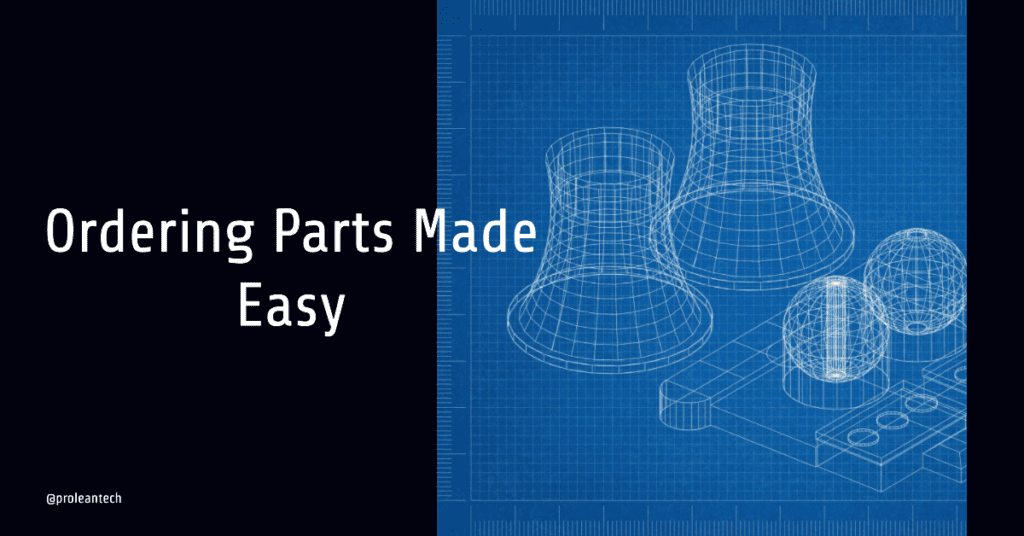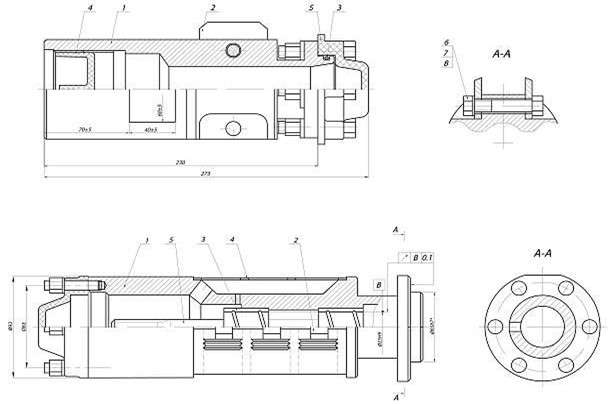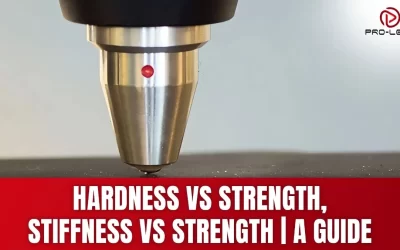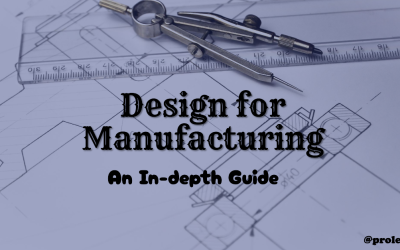
Clear communication between client and manufacturer is crucial in manufacturing to avoid misunderstandings and errors, which can cause costly delays and problems. 2D drawings are still essential in conveying critical information about a part’s dimensions, tolerances, and finishes. They have several advantages over 3D models, such as being easier to create and modify, and more precise in certain aspects. 2D drawings also provide information that may not be immediately apparent from a 3D model. Although 3D models have their advantages, they are not a substitute for 2D drawings. Both clients and manufacturers must be proficient in their use to ensure accurate and efficient production.
This article will delve into the importance of 2D drawings, their role in part manufacturing, and how they can enhance communication, reduce errors, and streamline production.
The Basics: Understanding 2D Drawings

At the heart of every manufactured part is a detailed plan, which is typically in the form of 2D drawings. These technical drawings provide a detailed graphical representation that communicates how something functions or is to be constructed in the manufacturing sector.
To create a 2D drawing, a designer must consider all the different views of the part, such as top, front, and side views, to provide a comprehensive blueprint of the part. The designer must also consider the materials, dimensions, and tolerances required for the part to function correctly.
Once a designer has created the 2D drawing, it becomes a critical communication tool between the designer and the manufacturer. The manufacturer relies on the 2D drawing to create the part accurately and efficiently, reducing the risk of errors and decreasing production costs.
Overall, 2D drawings play a vital role in the manufacturing sector, providing a detailed plan and communication tool that ensures the part is created accurately and efficiently.
Related resource: Advantages and Applications of Sheet Metal Drawing
What is a 2D Drawing?
A 2D drawing primarily presents the design of a part in two dimensions: height and width. Unlike a 3D model, it does not account for depth. Each view in a 2D drawing depicts a specific side of the part, offering a flattened, scalable depiction of the component.
The following are the major Elements of a 2D Drawing
- Views: Standard 2D drawings include several views, each displaying a different perspective of the part. These typically consist of front, top, and side views. An isometric view may also be included for a three-dimensional perspective.
- Dimensions: The drawings detail the exact dimensions of each feature on the part. Dimensions typically include length, width, diameter, and radius.
- Tolerances: These are specified allowances on the dimensions, indicating the acceptable variance during manufacturing.
- Notes and symbols: Additional information on material, surface finish, treatments, or specific instructions is included in the form of notes and symbols.
- Title Block: This section contains information about the drawing such as the title, drawing number, author, date, and revision history.
Table: Key Elements of 2D Drawings
| Element | Description |
|---|---|
| Views | Front, top, and side views of the part |
| Dimensions | Exact measurements of each feature |
| Tolerances | Acceptable variance in dimensions |
| Notes and Symbols | Additional details on material, finishes, etc. |
| Title Block | Information on the drawing itself |
The Importance of 2D Drawings When Ordering Parts
When ordering parts from a manufacturer, 2D drawings play an integral role in several ways. They offer a universal language, ensuring the manufacturer understands exactly what is required, thereby reducing the chance of errors and misunderstandings.
1. Clear Communication of Design Intent
A 2D drawing communicates the designer’s intent to the manufacturer. It serves as a visual guide that accurately depicts the part’s design, highlighting all its features and dimensions. This clear communication ensures that everyone involved in the manufacturing process understands the part’s design, even if they come from different backgrounds or speak different languages.
2. Defining Critical Dimensions and Tolerances
Every part has critical dimensions that must be strictly adhered to for it to function properly. These dimensions, along with their allowable tolerances, are clearly defined in a 2D drawing. By precisely indicating these values, the manufacturer can produce a part that meets the exact specifications.
3. Providing Information on Finishes and Materials
A 2D drawing doesn’t just detail the part’s design; it also provides crucial information on the material from which the part should be made, the type of finish required, and any additional treatments or processes that need to be applied. This information ensures the part is not only manufactured accurately but also exhibits the correct properties and aesthetics.
Bulleted List: Importance of 2D Drawings When Ordering Parts
- Clear communication of design intent
- Defines critical dimensions and tolerances
- Provides information on finishes and materials
- Reduces errors and misunderstandings
- Serves as a universal language in manufacturing
The Legal Importance of 2D Drawings
The legal significance of 2D drawings is another key aspect that is often overlooked. However, these documents can protect intellectual property rights and be used as a form of legal recourse if needed. Furthermore, your 2D drawings can serve as a record of your unique design and can be used to prove originality if your intellectual property rights are ever contested. By clearly specifying the design, materials, and manufacturing process, you can establish the distinctiveness of your product.
In situations where a manufacturer does not meet the agreed-upon specifications, the 2D drawings can be used as evidence in any potential legal disputes. It sets the baseline for what was expected, and any deviation from the drawings can be held against the manufacturer.
Table: Legal Importance of 2D Drawings
| Role | Description |
|---|---|
| Intellectual Property Protection | Record of unique design and proof of originality |
| Legal Recourse | Evidence in disputes regarding specification deviations |
Try Prolean Now!
Making the Most of 2D Drawings in Manufacturing
Although the advantages of 2D drawings are clear, their potential can be maximized by leveraging them strategically within your organization.
1. Enhanced Collaboration
One of the main benefits of using 2D drawings is that they help improve collaboration between different teams such as design, production, and quality control. These teams can work from a unified document, which reduces the chances of misunderstandings and ensures that everyone is on the same page. This, in turn, can lead to increased efficiency and productivity.
2. Improved Cost Estimations
Detailed 2D drawings can provide a clear scope of work. This means that they can help provide more accurate cost estimations, which is very important in today’s competitive business environment. By having a better understanding of the scope of work, businesses can budget more effectively and reduce unexpected expenses, which can be a huge advantage.
3. Facilitating Supplier Selection
Another important benefit of using 2D drawings is that they can help facilitate supplier selection. By providing suppliers or manufacturers with detailed 2D drawings, they can get a better understanding of your needs and evaluate their capability to meet them. This can help you find the most suitable partner for your manufacturing needs, which can be a game-changer for your business.
4. Training Purposes
2D drawings are also an invaluable training resource. This is especially true for complex parts, where it can be difficult to understand how different components fit together. With 2D drawings, people can get a clear, visual understanding of the part, its components, and its assembly. This can help reduce training time and improve overall efficiency.
Summing up: How Prolean’s On-Demand Manufacturing Services Leverage 2D Drawings?
Prolean’s On-Demand Manufacturing Services fully recognize the power of 2D drawings in ensuring the production of high-quality, accurate parts. Here’s how we use these essential blueprints to guide our processes: 2D drawings play an indispensable role in the manufacturing industry. They are the blueprint of any part to be manufactured, outlining detailed specifications and ensuring that manufacturers and clients are on the same page. They not only help in maintaining quality control but also protect intellectual property and act as a legal reference in case of disputes.
At Prolean, we understand the value of accurate 2D drawings in delivering high-quality, precise parts to our clients. Through our On-Demand Manufacturing Services, we leverage advanced technology and expertise to interpret and apply these drawings, ensuring a smooth manufacturing process that delivers to your exact specifications.
FAQ’s
Why are 2D drawings important when ordering parts from a manufacturer?
2D drawings are important as they provide a clear and universal method of communicating specifications, ensuring accuracy, and maintaining consistency in manufacturing. They also serve as legal documents that can protect intellectual property rights and offer legal recourse.
What are some considerations when creating 2D drawings?
Key considerations include clarity of presentation, comprehensive detailing, adherence to industry standards, and effective revision control.
What roles do 2D drawings play in legal situations?
2D drawings can serve as a record of unique designs for intellectual property protection and as evidence in legal disputes regarding specification deviations.
How can 2D drawings enhance manufacturing processes?
2D drawings can enhance collaboration between teams, improve cost estimations, facilitate supplier selection, and serve as an invaluable training resource.




Ich finde es spannend, besonders im Prototypenbereich erst einmal 2D-Modelle zu bauen. Wie ihr schon gesagt habt, es ist kostengünstiger und einfacher herzustellen. Ich beschäftige mich gerade mit dem 2D-Laserschneiden und welche Vorteile und Nachteile dies hat, um Prototypen zu bauen.
Danke für deine Worte! Was Ihre Frage betrifft, bietet das 2D-Laserschneiden zahlreiche Vorteile für den Prototypenbau, wie zum Beispiel:
Hohe Präzision und Genauigkeit: Das Laserschneiden liefert hochpräzise Schnitte mit einem Toleranzbereich von 0,003 mm bis 0,006 mm, was für Branchen, die enge Toleranzen erfordern, wie die Luft- und Raumfahrt, unerlässlich ist.
Kosteneffizienz: Sie ist im Allgemeinen günstiger als andere CNC-Maschinen, da keine kundenspezifischen Werkzeuge für verschiedene Projekte erforderlich sind, was zu geringeren Wartungs- und Betriebskosten führt.
Komplexe Aufgaben: Laserschneider können komplexe Aufgaben bewältigen, die für andere Technologien möglicherweise zu anspruchsvoll sind, und ermöglichen die Herstellung komplizierter Geometrien.
Materialausnutzung: Der Materialabfall ist minimal, da das Laserschneiden eine höhere Blechausnutzung ermöglicht.
Schadensverhütung: Beim Laserschneiden werden Materialschäden trotz hoher Hitzeeinwirkung vermieden, da nur ein kleiner Bereich des Materials betroffen ist.
Geringer Stromverbrauch: Laserschneider verbrauchen weniger Energie, da sie keine beweglichen Teile haben und schnell arbeiten.
Materialkompatibilität: Sie können mit einer Vielzahl von Materialien arbeiten und andere Prozesse wie Markieren, Bohren und Gravieren durchführen, ohne das Werkzeug wechseln zu müssen.
NACHTEILE
Materialverdunstung: Einige Materialien, wie z. B. Kunststoffe, können beim Schneiden verdunsten, was ein Nachteil sein kann, aber von erfahrenen Bedienern in den Griff zu bekommen ist.
Bedarf an Fachwissen: Professionelle Bediener sind erforderlich, um die Maschine vollständig zu nutzen und ihre Einrichtung korrekt zu verwalten.
Dickenbeschränkungen: Beim Laserschneiden gibt es Einschränkungen beim Schneiden sehr dicker Metalle.
Anschaffungskosten: Die Vorabkosten für die Anschaffung einer Laserschneidmaschine können erheblich sein.
Dämpfe und Gase: Das Schneiden bestimmter Materialien kann zur Entstehung schädlicher Dämpfe und Gase führen, insbesondere bei der Arbeit mit Kunststoffen1.